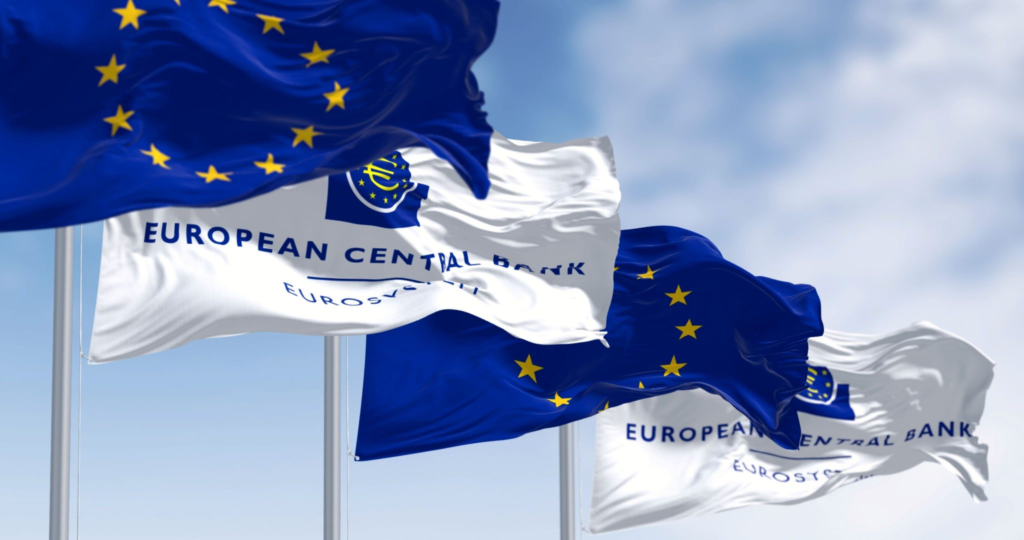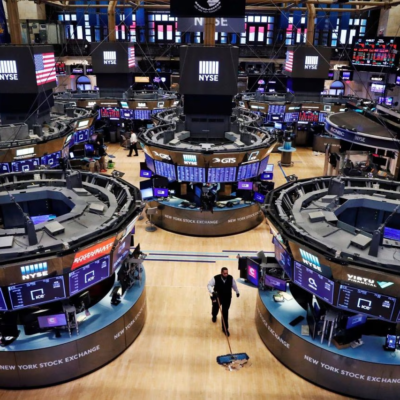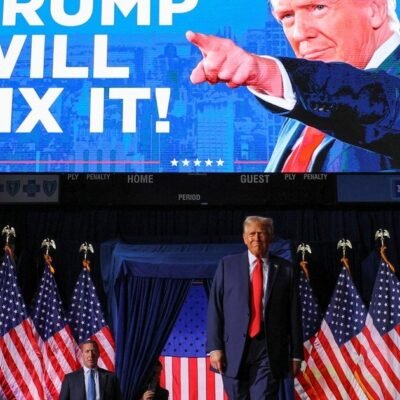The European Central Bank (ECB) has officially reduced its key interest rate, a significant move that reflects increasing concern over slowing global trade and rising geopolitical tensions. This decision, made in early June, marks the first interest rate cut by the ECB in nearly five years. Experts say the move points to broader global coordination among central banks in response to economic headwinds.
A Historic Rate Cut Amid Fragile Recovery
The ECB’s Governing Council voted to cut its benchmark deposit rate by 25 basis points, bringing it from 4.00% to 3.75%. The rate cut comes at a time when inflation in the Eurozone has cooled from its double-digit peaks but remains slightly above the ECB’s 2% target.

Christine Lagarde, President of the ECB, stated that the rate cut is intended to support the Eurozone’s gradual recovery while avoiding a premature tightening of monetary policy. “We are aware of the fragile economic conditions globally,” Lagarde explained. “This step is part of a larger strategy to maintain financial stability and support growth.”
For more insights on the ECB’s monetary policy, visit the European Central Bank official site.
A Coordinated Response from Global Central Banks
The ECB’s move is not an isolated case. In recent weeks, several other major central banks have signaled or taken similar actions. The Bank of Canada also cut interest rates this month, while policymakers at the U.S. Federal Reserve are hinting at potential rate adjustments later in the year.
Analysts point out that these decisions reflect a coordinated effort to stabilize the global economy, which is currently facing multiple challenges: declining international trade, supply chain disruptions, elevated oil prices, and ongoing geopolitical conflicts in Eastern Europe and the Middle East.
“This is not just about Europe. Central banks are increasingly acting in unison to protect the global economy from a synchronized slowdown,” said Dana Peterson, Chief Economist at The Conference Board.
Trade Stress Weighing on Global Growth
The need for such coordination stems largely from rising trade tensions across the globe. In particular, disputes between the United States and China over technology exports and tariffs continue to disrupt global supply chains. Additionally, new regulatory frameworks being adopted in various countries are leading to increased uncertainty in global trade flows.
According to the World Trade Organization, global merchandise trade volume is expected to grow by only 2.6% in 2025, far below the pre-pandemic average of around 4%. A slowdown in trade often leads to lower business investment and reduced industrial output, both of which weigh on overall economic growth.
Visit the WTO’s latest trade outlook for more details on trade projections.
Positive Market Reaction, but Caution Remains
Financial markets responded positively to the ECB’s rate cut. European equities rose modestly, with the Stoxx Europe 600 Index up 1.2% on the day of the announcement. The euro weakened slightly against the dollar, reflecting expectations of easier monetary conditions in the Eurozone.

However, economists warn that a single rate cut is unlikely to be a cure-all. “While the ECB’s action provides temporary relief, the real solution lies in resolving trade conflicts and enhancing global supply chain resilience,” said Holger Schmieding, Chief Economist at Berenberg Bank.
Impacts on Businesses and Consumers
For businesses, particularly exporters, the rate cut is a welcome sign. Lower interest rates typically lead to lower borrowing costs, making it easier for companies to invest in operations and expansion. European manufacturers, which have been struggling due to weak demand from Asia and the U.S., may find some breathing room.
Consumers could also benefit. Lower interest rates mean cheaper loans, mortgages, and credit, which may stimulate household spending. However, the full effect depends on how commercial banks pass on the reduced rates to consumers.
Uncertainty Over Future Rate Path
Despite the move, the ECB remains cautious. In her statement, Lagarde emphasized that future policy actions will be based on evolving economic data. Inflation remains a concern, particularly given the uncertain geopolitical climate and its impact on energy prices.
Economists believe the ECB may pause further cuts until there is clearer evidence of economic weakening or stable inflation trends. “The door is open, but it’s not a given that more rate cuts will follow immediately,” said Carsten Brzeski, Global Head of Macro at ING.
Global Investors Watching Fed’s Next Move
Attention now turns to the U.S. Federal Reserve, which is set to meet later this month. While inflation in the U.S. remains higher than in Europe, there are signs of easing price pressures and slowing job growth. A dovish signal from the Fed could further solidify the narrative of global monetary easing.
If the Fed cuts rates in the coming months, it would reinforce the sense of a globally coordinated central bank response. Investors are closely watching economic indicators such as U.S. retail sales, consumer sentiment, and employment data to gauge the Fed’s next move.
Stay up to date on the Federal Reserve’s policy updates.
Conclusion: A Turning Point for Global Monetary Policy?
The ECB’s interest rate cut is more than just a monetary policy decision—it is a signal of strategic coordination among global financial leaders. As trade stress continues to cloud the economic outlook, central banks are choosing to act preemptively.
While it remains to be seen whether these steps will be enough to shield the global economy from a downturn, the coordinated efforts reflect a clear understanding: in an interconnected world, economic shocks require a united response.
Also Read – U.S. CEO Confidence Drops Sharply Due to Global Trade Fears





